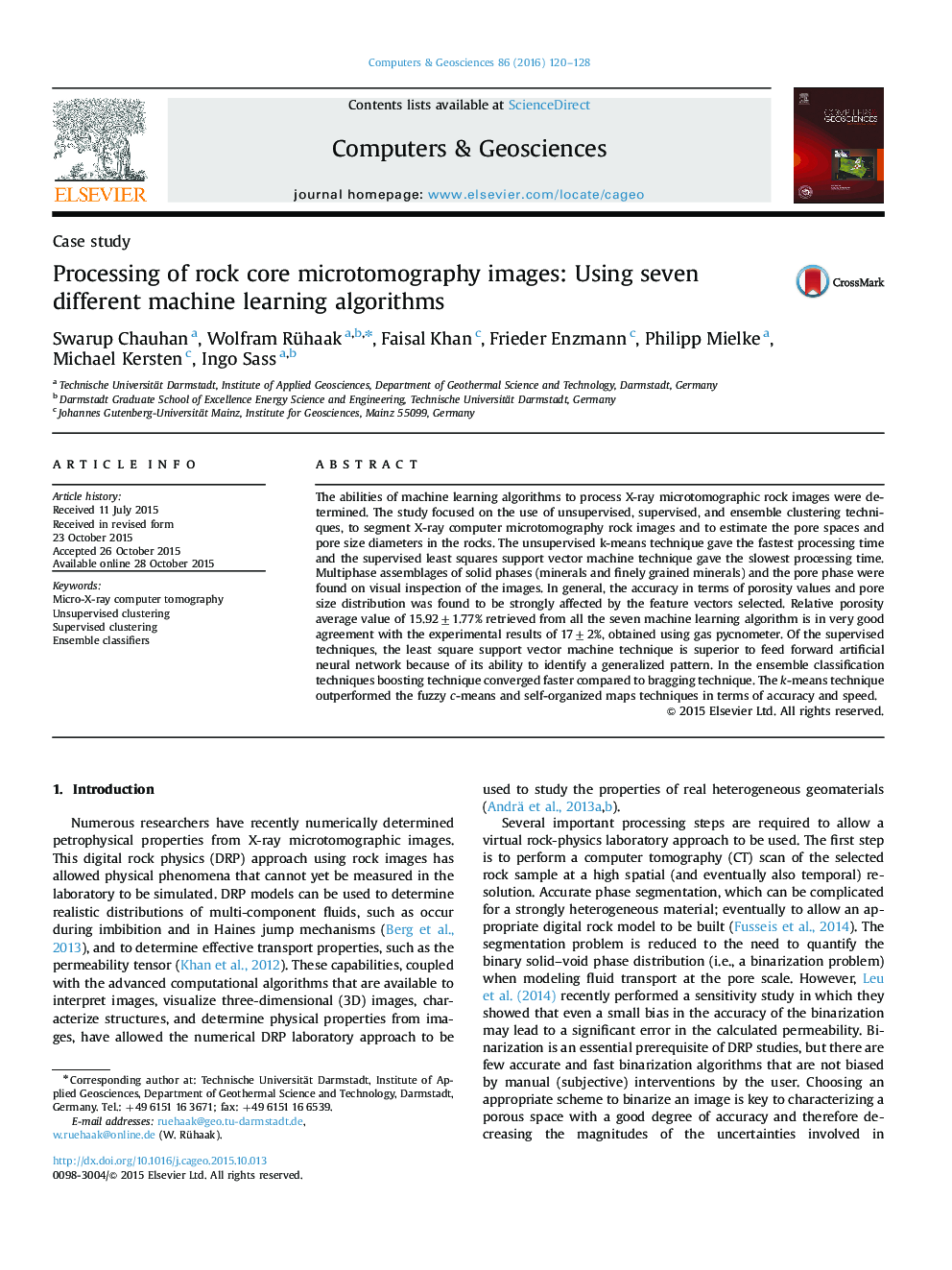| Article ID | Journal | Published Year | Pages | File Type |
|---|---|---|---|---|
| 6922474 | Computers & Geosciences | 2016 | 9 Pages |
Abstract
The abilities of machine learning algorithms to process X-ray microtomographic rock images were determined. The study focused on the use of unsupervised, supervised, and ensemble clustering techniques, to segment X-ray computer microtomography rock images and to estimate the pore spaces and pore size diameters in the rocks. The unsupervised k-means technique gave the fastest processing time and the supervised least squares support vector machine technique gave the slowest processing time. Multiphase assemblages of solid phases (minerals and finely grained minerals) and the pore phase were found on visual inspection of the images. In general, the accuracy in terms of porosity values and pore size distribution was found to be strongly affected by the feature vectors selected. Relative porosity average value of 15.92±1.77% retrieved from all the seven machine learning algorithm is in very good agreement with the experimental results of 17±2%, obtained using gas pycnometer. Of the supervised techniques, the least square support vector machine technique is superior to feed forward artificial neural network because of its ability to identify a generalized pattern. In the ensemble classification techniques boosting technique converged faster compared to bragging technique. The k-means technique outperformed the fuzzy c-means and self-organized maps techniques in terms of accuracy and speed.
Related Topics
Physical Sciences and Engineering
Computer Science
Computer Science Applications
Authors
Swarup Chauhan, Wolfram Rühaak, Faisal Khan, Frieder Enzmann, Philipp Mielke, Michael Kersten, Ingo Sass,
